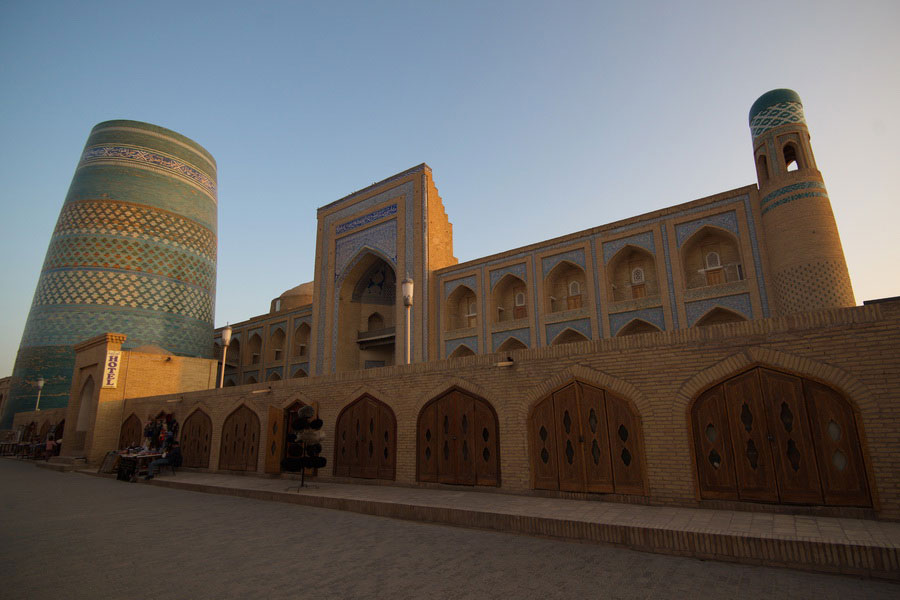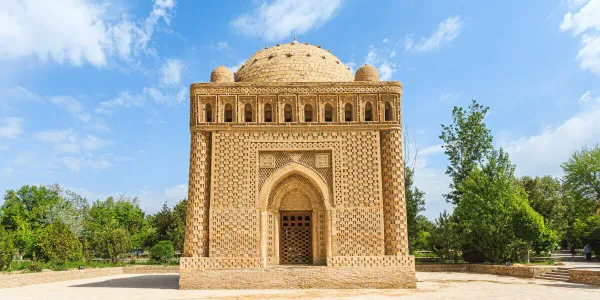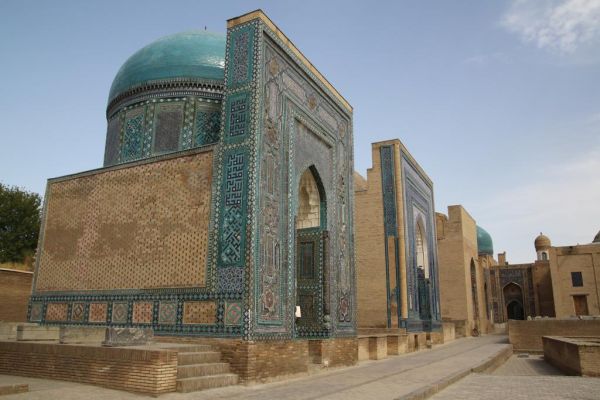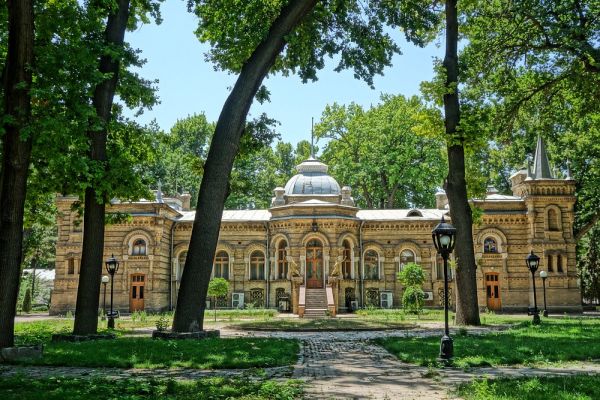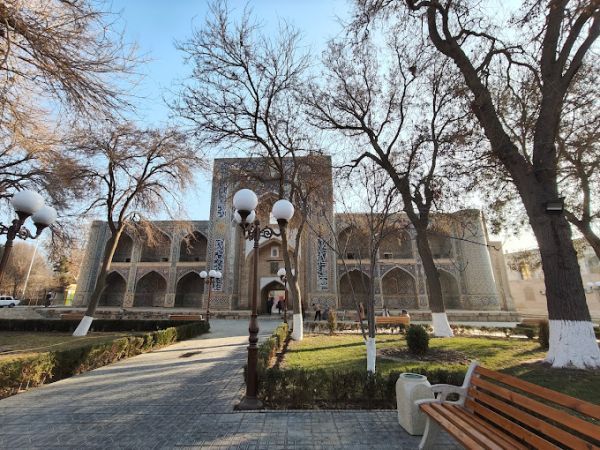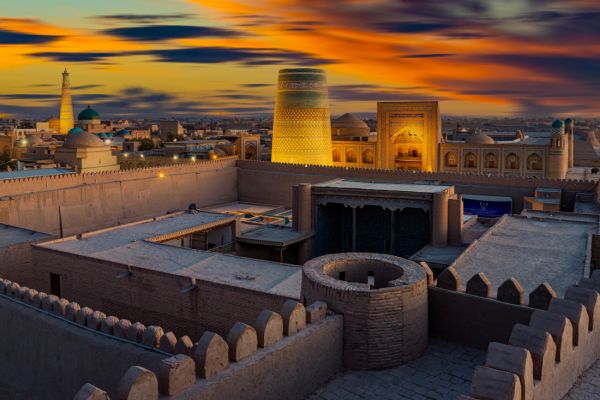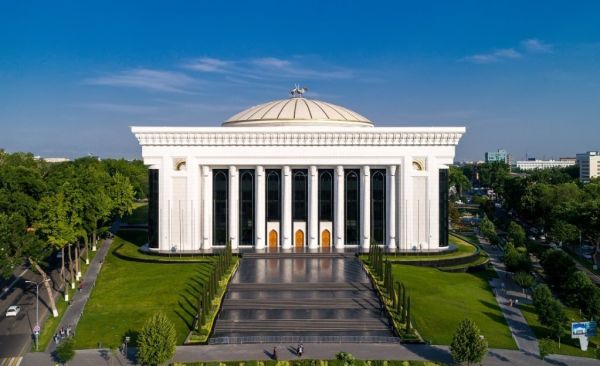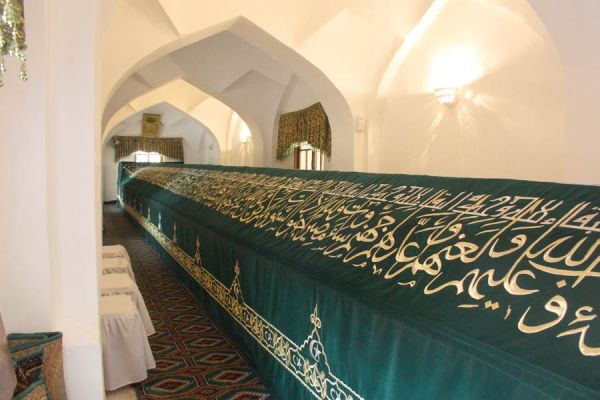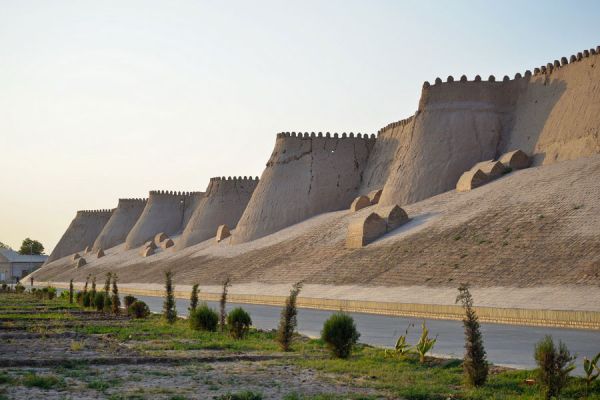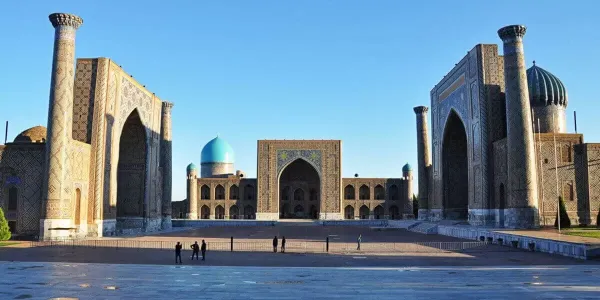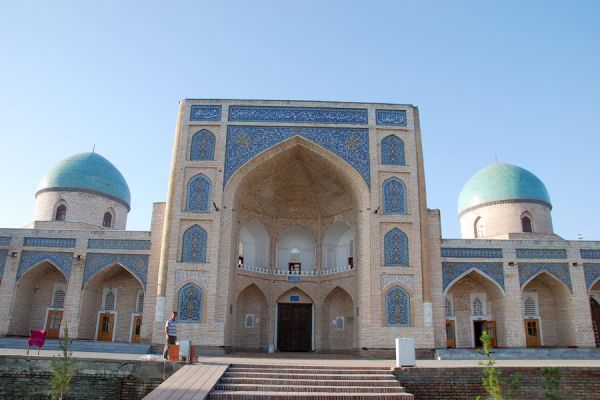Muhammad Amin Khan Madrasah
"This beautiful structure will stand forever for the joy of posterity." This is how the Arabic inscription adorning the 25-meter-high portal of the Muhammad Amin Khan madrasah translates into Russian. As time has shown, the phrase turned out to be prophetic.
The one-and-a-half-meter walls of the burnt brick building have reached our days almost in their original form. But they are not the ones who attract the attention of numerous tourists. The reason for this is the large size of the former educational institution — the madrasah occupies an area of 72 by 60 m2. Due to its impressive size, the building has earned the fame of the largest madrasah in all of Central Asia.
The two-storey building consists of 130 two-room cells. According to historical documents, the walls of the Muhammad Amin Khan madrasah could accommodate up to 260 students. Once upon a time, there was even an office of the Supreme Muslim Court here. The hotel located in the building helps everyone to plunge into that atmosphere and be transported back several centuries. Travelers say that slightly renovated cells of students are used as hotel rooms.
Architecture of the Muhammad Amin Khan Madrasah
The architectural style of the building is not much different from other madrasahs of that time. The building is characterized by symmetry, a spacious courtyard, an elongated rectangular portal and numerous arched vaults with patterned lattices.
The characteristic guldasta towers and five domes rise above the four corners of the madrasah. Glazed brick decor was used as a facade decoration, wooden doors are distinguished by ornamental carvings and cladding made of baked clay — majolica. Arched loggias make the madrasahs particularly attractive.
The main facade of the landmark hides numerous buildings: utility rooms, auditoriums, and the winter mosque. The courtyard is decorated in the form of four small portals. Their front part is also decorated with majolica. Patterns and Arabic inscriptions serve as a harmonious complement to it. The total area of the courtyard is 38 by 38 m2.
The architectural unity is also supported by the interior of the madrasah, designed in the spirit of national Uzbek traditions.
History
The building was built on the orders of Muhammad Amin Khan, in whose honor it was so named. The story goes that in this way the ruler wanted to perpetuate his name. Amin Khan pursued an ambitious goal — the madrasah was to surpass other buildings of a similar type.
In 1851, the ruler selected the best project on a competitive basis. It belonged to the chief craftsman of the city of Khiva. The construction of the building took three years. The population of the town participated in the large-scale construction. Moreover, they did it all absolutely for free and naturally against their will.
But one madrasah was not enough for the ruler. As soon as the construction was completed, the khan ordered the construction of the minaret. According to his plans, the tower was supposed to reach a height of about 70-80 meters. In fairness, it should be noted that this is not just a whim — according to Muslim traditions, every mosque must have its own minaret.
But grandiose plans were not destined to come true. In 1855, Muhammad Amin Khan died. Along with his death, the construction of the minaret also stops. Like the Muhammad Amin Khan madrasah, the tower is decorated with a laudatory ode. Its meaning boils down to the fact that the building is an incomparable minaret, "an endless pillar of heaven" and "a delight for the human soul." As for the delights, the Kalta Minor minaret really pleases the eye with its multicolored coloring - green, blue and light blue colors predominate.
What tourists can see today is the result of unfinished business. Nevertheless, some travelers admit that even in this form, the "shortened" minaret makes a proper impression on them.
The historical value of the madrasah has been noted not only by local authorities, but also by UNESCO. An international organization has added the landmark to the list of World Heritage Sites.
